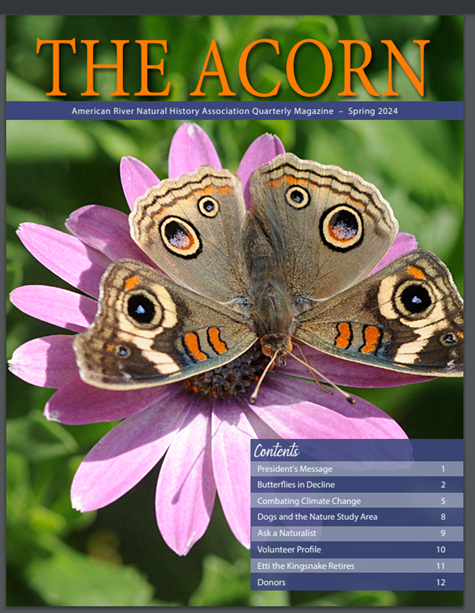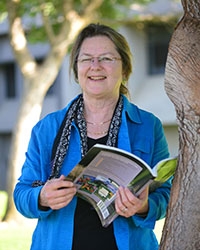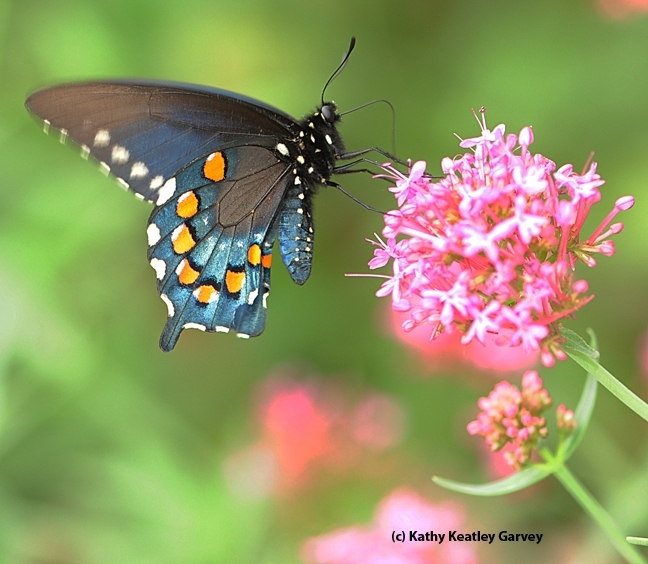
You'll learn which butterfly populations are struggling and which ones are doing well, and glean more information about the research of UC Davis distinguished professor emeritus Art Shapiro, and his collaborator, Professor Matt Forister of the University of Nevada, his former doctoral student.
Shapiro has been monitoring the butterfly populations of central California since 1972. His transect of ten fixed study sites sprawls from the Sacramento River Delta, through the Sacramento Valley and Sierra Nevada mountains, and to the high desert of the western Great Basin. The sites, Shapiro says, "represent the great biological, geological, and climatological diversity of central California."
The article is authored by entomologist Mary Louise Flint, a docent at the center and editor of the quarterly. She holds the title of professor of Cooperative Extension emerita, based in the UC Davis Department of Entomology and Nematology. She served as a longtime associate director of the UC Statewide Integrated Pest Management Program (UC IPM) until her retirement in June 2014. (See her biography on the UC IPM website).
"Over the last decade or two, scientists in many parts of the world have documented examples of declining insect num- bers—both in numbers of species (species richness) and in the number of individuals of each species (population levels)," Flint began. "Habitat loss, pesticide use, and climate change are usually identified as the main contributing factors, although circumstances vary among insect species and location."

"Three of Shapiro's sample sites," Flint pointed out, "are relatively close to our nature area—Rancho Cordova, near the American River across from Sacramento Bar, North Sacramento on the American River near California State University, and West Sacramento in the Yolo Bypass near the causeway. (The Rancho Cordova site is closest and most similar to Effie Yeaw in habitat.) A close study of the data collected at these sites between 1988 and 2010 showed that summer minimum temperatures and fall maximum temperatures increased significantly and precipitation decreased. During this time, species richness tended to decrease after years of high temperatures and reduced precipitation."

Among those on "the struggling list" are the monarch, Danaus plexippus; West Coast lady, Vanessa annabella; the great copper, Lycaena xanthoides; and the large marble, Euchloe ausonides. The large marble, "formerly common in the Central Valley, Delta, Bay Area and lower foothills...has suffered an unexplained crash and is teetering on the brink of regional extinction," according to Shapiro's website.
Those on the "doing well" list include the Gulf Fritillary, Agraulis vanillae; pipevine swallowtail, Battus philenor; fiery skipper, Hylephila phyleus; the Western tiger swallowtail, Papilio rutulus; and the gray hairstreak, Strymon melinus.
See Flint's article for more information, and access Shapiro's research research website, and Forister's research website.
A buckeye butterfly, Junonia coenia (image by yours truly) graces the cover. Numerous other butterfly images illustrate the piece.
Shapiro recently delivered a presentation, "Using Butterflies to Understand Biotic Responses to Climate Change," at the UC Davis emeriti celebration, organized and coordinated by UC Davis Distinguished Professor Walter Leal of the Department of Molecular and Cellular Biology. (See Shapiro's presentation on YouTube and coverage on Bug Squad blog.)
Attached Images:
